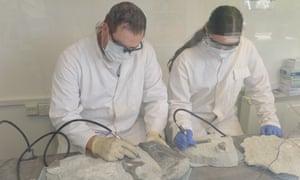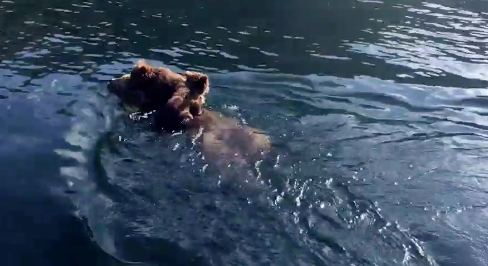via OUP Blog by Anna Marmodoro

Creation of Adam, by Michelangelo. CC0 Public Domain via Wikimedia Commons.
What do we think of when we think of ‘God’? Any answer to this question will include the idea that the divine is powerful. God creates, God is in charge of the world. If we think that the concept of God doesn’t make sense, that may be partly because the concept of God’s power doesn’t make sense: how can a good God be powerful whilst the world contains this much suffering?
The nature and extent of divine power is theologically fundamental. But underlying any theological claim about divine power are a set of philosophical ideas about power. Power is capacity – to act, to interact, to effect change. Thus power is central to the make-up of the world, to how its different bits relate causally. In late antiquity, towards the end of the Roman Empire, Neoplatonism, and Christianity between them reconfigured thinking on divine power, and with it the world, in ways that often seem alien to us, yet would prove enduringly significant in Western thought.
Continue reading
=============================
via ResearchBuzz Firehose: Sam Trendall in Public Technology
Comprehensive map allows public to locate parks, children’s play areas, playing fields and more, and use the data to create business ventures.
Continue reading and discover that the database can be used to find places to walk etc when in an unfamiliar place in Britain.
=============================
via Interesting Literature
The finest fruity poems
Many poets have written lyrically about fruit over the years, whether it’s apples, cherries, oranges, or figs. Here are ten of the very finest poems about fruit in all of English literature.
Continue reading
=============================
via 3 Quarks Daily: David Grimm in Science

A cat in a domestic setting—eating under a dining table—sometime after 1500 B.C.E.
Around 1950 B.C.E., someone painted an unusual creature on the back wall of a limestone tomb some 250 kilometers south of Cairo. With its long front legs, upright tail, and triangular head staring down an approaching field rat, it is unmistakably a domestic cat – the first appearance in the art of ancient Egypt. In the centuries that followed, cats became a fixture of Egyptian paintings and sculptures, and were even immortalized as mummies, as they rose in status from rodent killer to pet to god. Historians took all this as evidence that the ancient Egyptians were the first to domesticate the feline. That is, until 2004, when researchers discovered a 9500-year-old cat buried with a human on the Mediterranean island of Cyprus, revealing that cats had been living with people thousands of years before Egypt even existed. A new study could put Egypt back in the limelight. A genetic analysis of more than 200 ancient cats suggests that, even if the animals were domesticated outside Egypt, it was the Egyptians who turned them into the lovable fur balls we know today. It’s even possible they domesticated cats a second time. “It’s a very nice piece of work,” says Salima Ikram, an expert on ancient Egyptian animals and cat mummies at American University in Cairo. The idea that the Egyptians helped shape the modern cat, she says, “makes perfect sense.”
Continue reading
=============================
via The National Archives Blog by Dr Richard Dunley
Mers-el-Kébir. Three words that signify the nadir of 20th century Anglo-French relations. In the early evening of 3 July 1940 the British warships of Vice-Admiral James Somerville’s Force H opened fire on the virtually defenceless vessels of their former ally, France. In the space of nine minutes the British destroyed or disabled much of the French fleet and killing almost 1,300 French sailors.
For many across the Channel the events of 3 July 1940 represent the ultimate betrayal of trust by a close ally. The decision taken by Winston Churchill to sink the French fleet rather than let it fall into the hands of the Germans is one that has been discussed at great length ever since that summer evening. What no one, until now, realised is that this was not the first time Churchill had been faced with this problem.
Continue reading
=============================
via OUP Blog by the Oxford Reference marketing team

Photograph by Jovi Waqa. CC0 1.0 Public Domain via Unsplash
We may see fairy tales now as something from our youth, a story to get a child to sleep, keep them from boredom, or to teach a moral lesson. However, fairy tales haven’t always just been for kids. In late seventeenth-century France the fairy tale became a ‘legitimate’ genre of literature for the educated (adult) classes to read.
Continue reading
=============================
via Big Think by Paul Ratner
Albert Einstein’s theory of general relativity predicted that the gravity of stars could brighten and bend the light coming from other stars like a magnifying lens. Yet this is something Einstein did not think we could ever see due to the great distance between stars, writing in a 1936 article that “there is no hope of observing this phenomenon directly”.
Continue reading
=============================
via the Guardian by Nicola Davis

The bones include evidence of bite marks and healing, hinting at how the dinosaur may have died. Photographs: Cambridge Photographers/Wienerberger.
The near-complete fossilised skeleton of a dinosaur, thought to have lived about 132m years ago, has been unearthed at a brick factory in Surrey.
Paleontologists say they discovered the bones during a routine visit to the site of the Wienerberger quarry in February. The first clues came when the team looked at rock that had been turned up by a bulldozer at the site and discovered a couple of tail vertebrae.
Continue reading
=============================
via Interesting Literature
A reading of a Shakespeare sonnet
Sonnet 32 sees Shakespeare musing upon his own death. What if he were to die, and later poets come along with better poems for the Fair Youth? This is the starting-point of our analysis of Sonnet 32, in which the Bard discusses love poetry in a self-conscious way.
Continue reading
=============================
Watch this mama bear carry her cubs across a river on her back
via Boing Boing by David Pescovitz

David Roseman, an employee at Alaska's Wood Tikchick State Park, spotted this big bear carrying her cubs across the river on her back.
Continue reading and yes, there is a video
via Boing Boing by David Pescovitz

David Roseman, an employee at Alaska's Wood Tikchick State Park, spotted this big bear carrying her cubs across the river on her back.
Continue reading and yes, there is a video
No comments:
Post a Comment